Alumni
1997
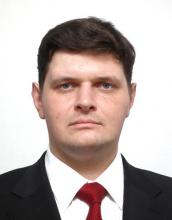 1997
Сторінка
In 1991, entered KPI in the first intake of the Physical and Biomedical Electronics Department in the specialty “physical electronics”, and graduated with honors in 1997, receiving a master's degree. Since 1997, he has worked at the Department of Physical and Biomedical Electronics as an assistant, senior lecturer, and, since 2011, associate professor. Teaches the courses “Modeling in Electronics”, “Programming and Algorithmic Languages”, “Design and Engineering of Biomedical Equipment”, “Digital Technologies in Microelectronics”, for which he has developed curricula and work programs and arranged cycles of laboratory work. He supervises bachelor's and master's theses. Has published more than twenty scientific papers. In 2009 received a PhD degree in engineering. The research interests lie in the field of physics of gyrotropic media and the development of nonreciprocal passive microwave devices based on them. |
1999
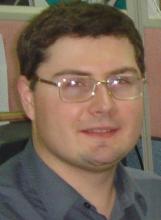 1999
Сторінка
Received MSc in Biomedical Electronics in 1999, joined as Assistant Professor. In 2003 defended thesis "Microwave dielectric phaseshifters" and received Candidate of Science degree (PhD). Since 2004 - senior lecturer, since 2010 - Associate Professor. Giving classes on numerical methods, digital circuits design, IC design. Interests: numerical methods, DSP, FPGA prototyping, wireless communications, passive microwave devices, microwave measurements. |
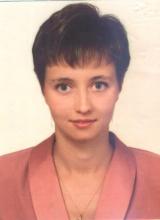 1999
In 1999, she graduated Faculty of Electronic Engineering of NTUU "KPI". In 2002, she completed postgraduate studies at NTUU "KPI". From 2002 to the present, she works at Electronics Engineering Department as Associate Professor. Defended candidate's thesis on the topic: "Modeling of electrothermal processes in submicron heterostructures" under the supervision of prof V.I. Tymofeyev. Author of 14 publications, including 1 invention patent and 1 invention application. Under the leadership of Semenovska O.V. 2 bachelor certification theses were defended. Lectures, practical and laboratory classes are held from the courses: "Introduction to measurement technology", "Microwave technology". Abstracts of lectures from the courses: "Methods of mathematical physics", "Microwave technology" have been published in co-authorship. |
2000
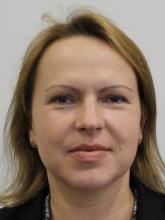 2000
LinkedIn
Olga Korostynska is a Professor in BioMedical Engineering at Oslo Metropolitan University (OsloMet), Oslo, Norway. She has a B.Eng (1998) and M.Sc (2000) in Biomedical Engineering from National Technical University of Ukraine (KPI), PhD (2003) in Electronics and Computer Engineering and LLB (2011) from the University of Limerick, Ireland. Before joining OsloMet, she worked at Norwegian University of Life Sciences (NMBU) as Associate Professor. She was a Senior Lecturer in Advanced Sensor Technologies in the Liverpool John Moores University, Liverpool, UK. She was EU Postdoctoral Research Fellow developing electromagnetic wave sensors for real-time water quality monitoring, as well as a Postdoctoral Researcher in the University of Limerick, working on a number of projects, including funded by IRCSET, EI and EU FP7 and also was a Lecturer in Physics in Dublin Institute of Technology, Dublin, Ireland. Prof. Korostynska has co-authored 2 books, 15 book chapters, 5 UK patents and over 300 scientific papers in peer-reviewed journals and conference proceedings. |
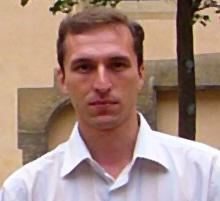 2000
Сторінка викладача
In 1994 - 2000, he studied at the Faculty of Electronics of NTUU "KPI" and obtained a master's degree. From 1999 to 2006, he worked as a radiologist engineer in the department of radionuclide diagnostics at the Department of Medical Radiology with a course in radiation medicine of the National Medical University named after O.O. Bogomolets After completing correspondence post-graduate studies at the department of FBME in 2006 under the guidance of Professor Loshytskyi P.P. defended his PhD thesis on "Physiotherapeutic devices with a stochastic spatially inhomogeneous low-frequency electromagnetic field". Since 2006, he has been working as a senior researcher in the research laboratory of medical physics and bioengineering of the National Cancer Institute. He has been teaching at the FtaBME department since 2004. He taught the courses "Interaction of physical factors with biological objects", "Digital electronics", "Applied biophysics", "Mathematical modeling of biophysical processes". Since September 2010, he has been studying at the doctoral program of NTUU "KPI". |
2002
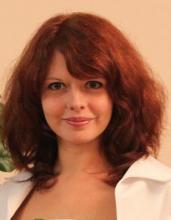 2002
She graduated with honors from the Faculty of Electronics of NTUU "KPI" in 2002, majoring in "Physical and Biomedical Electronics". She worked at the department as an assistant, a senior teacher, now she is an associate professor. In 2020, she obtained the degree of Candidate of Technical Sciences. The main direction of scientific activity is methods of processing and analysis of lung sounds and phonocardiograms. |
2003
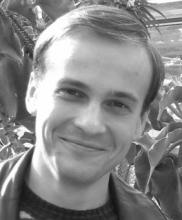 2003
LinkedIn
In 2003, he graduated from the master's degree at the Faculty of Electronics of NTUU "KPI". Assistant of the Department of Physical and Biomedical Electronics. Author of 9 scientific publications. The direction of scientific activity is modeling and measurement of parameters of semiconductor devices. Conducts courses on the theory of electronic circuits, analog and digital circuitry. |
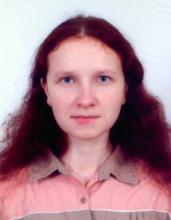 2003
Personal page
She studied at the department of physical and biomedical electronics, in 2003 she obtained a master's degree in the specialty "Physical and biomedical electronics". After graduation, she studied at a graduate school. In 2007, she defended her thesis "Electrically controlled microwave phase shifters based on microstrip and coplanar lines" and obtained a candidate of technical sciences degree in solid state electronics. |
2005
 2005
LinkedIn
She was born in 1981, completed her master's degree in 2005, and postgraduate studies in 2008 at the Department of Physical and Biomedical Electronics. In 2011, she defended her thesis on the topic "Modeling of submicron heterotransistors with small-sized systems." He has 15 scientific publications, a member of IEEE. |
2006
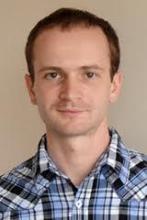 2006
Serhiy Romanenko, Ph.D., biophysicist, neurobiologist and electrophysiologist, whose career is an example of the intersection of physical sciences and biomedical research. Having received a bachelor's degree in electronics and a master's degree in physical and biomedical electronics at the National Technical University of Ukraine "Kyiv Polytechnic Institute", he obtained a candidate of biological sciences (PhD) degree in biophysics at the International Center of Molecular Physiology at the Institute of Physiology named after O.O. Bogomolets of the National Academy of Sciences of Ukraine in 2010, proving himself as an innovative researcher in the field of cellular biophysics. |



